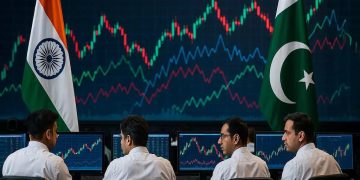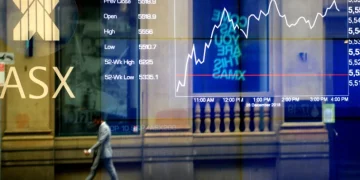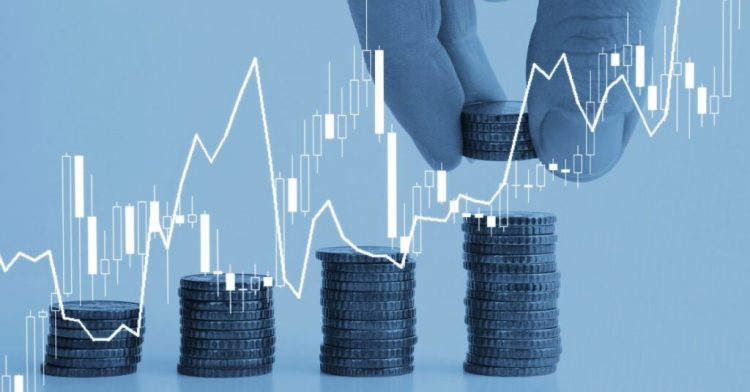The Global Economy’s New Balancing Act in 2025
In late 2025, the world’s policymakers find themselves walking a perilous tightrope — one stretched between the weight of growing debt and the fragility of public trust. The era of “cheap money,” which defined the decade after the 2008 financial crisis and was briefly revived during the pandemic, has definitively ended. What remains is a global economy caught in a slow, grinding adjustment — one where high interest rates, fiscal fatigue, and political volatility are converging to reshape the economic order.
According to the International Monetary Fund (IMF), global GDP growth is projected to slow to 3.2% in 2025, with fiscal constraints cited as a key drag. Governments that once relied on expansive spending to cushion shocks are now forced to retrench. The age of debt-fueled rescue packages has given way to austerity disguised as prudence.
I. The Return of Fiscal Gravity
For much of the past decade, governments treated fiscal expansion as a low-cost insurance policy against uncertainty. Interest rates were near zero, and investors seemed willing to absorb sovereign debt without blinking. That era is gone. By mid-2025, global public debt has reached nearly 93% of world GDP, according to IMF estimates — up from 84% just five years ago.
In the United States, the debate over fiscal responsibility has returned with vengeance. The Congressional Budget Office projects that U.S. federal debt will surpass 120% of GDP by 2030, a trajectory increasingly viewed as unsustainable. Yet partisan gridlock has made meaningful reform almost impossible. Every debate over the debt ceiling becomes a televised standoff, every compromise a temporary patch.
In Europe, the story is one of divergent fiscal paths. Germany’s constitutional “debt brake” has been reinstated, forcing the government to cut spending even as growth slows. Meanwhile, France and Italy struggle to rein in deficits without igniting social unrest. The eurozone’s new fiscal framework, negotiated under pressure from the European Commission, is meant to balance flexibility with discipline — but its credibility remains untested.
China faces a different kind of fiscal strain. After years of stimulus to prop up growth, local government debt has reached alarming levels, with some estimates placing total liabilities above 90% of GDP when off-balance-sheet vehicles are included. Beijing’s central authorities are reluctant to launch another massive stimulus, wary of inflating asset bubbles and worsening the structural imbalances already haunting the economy.
II. The New Politics of Austerity
Debt, once a technical matter for economists and central bankers, has become deeply political. Across democracies and autocracies alike, fiscal choices are now at the heart of political legitimacy.
In the United States, the narrative of “runaway government” has energized populist movements on both the right and the left. Conservatives denounce deficits as the product of bureaucratic waste, while progressives view fiscal restraint as a moral failure — an abandonment of the poor and the planet. The result is paralysis.
Europe’s populists have adopted a similar script. In Italy, parties on both ends of the spectrum argue that EU fiscal rules are relics of a neoliberal past. In France, protests against inflation and energy prices have taken on an explicitly anti-establishment tone. Governments find themselves torn between appeasing voters and maintaining market confidence — a tension that increasingly defines European politics.
In emerging markets, the politics of debt are even more volatile. From Argentina to Egypt, rising borrowing costs have triggered waves of social unrest. Sovereign defaults, once rare, are becoming more frequent. The World Bank notes that more than 60 low-income countries are now in or at high risk of debt distress, the highest number in decades. For these nations, fiscal disorder is not an abstraction — it’s a daily crisis.

III. Central Banks in the Crossfire
If fiscal tightening is one half of the global adjustment, monetary recalibration is the other. After two years of aggressive interest-rate hikes to curb inflation, the world’s major central banks are beginning to face a new dilemma: how to maintain price stability without triggering a financial accident.
In the U.S., the Federal Reserve has kept rates “higher for longer,” signaling that it prefers to err on the side of caution. Inflation has moderated, but not vanished. Yet high borrowing costs have begun to expose vulnerabilities — from overstretched corporate balance sheets to fragile regional banks. The Fed’s balancing act is no longer just about inflation; it’s about preserving confidence in the system itself.
The European Central Bank faces similar trade-offs. While inflation in the eurozone has fallen below 3%, growth remains anemic. Southern economies are pleading for rate cuts, while northern ones fear another asset bubble. The ECB’s cautious approach — a slow, deliberate easing cycle — risks pleasing no one.
In China, the People’s Bank of China (PBoC) is walking its own tightrope. It must support growth while managing a fragile property market and controlling capital outflows. Unlike Western central banks, it faces not inflation but deflationary pressure, a reflection of weakening domestic demand and excess capacity. Its policy tools — from targeted liquidity injections to modest rate cuts — are surgical rather than sweeping, reflecting Beijing’s anxiety about systemic risk.
IV. The Debt Domino Effect
One of the most alarming trends of 2025 is the synchronization of debt stress across regions. For the first time in decades, advanced and emerging economies are struggling under similar fiscal burdens. The global debt cycle — once staggered — is now synchronized.
High interest rates have made refinancing more expensive. Developing countries that borrowed heavily during the pandemic now face ballooning repayment costs. Many are turning to multilateral lenders or, increasingly, to China for relief. But even China’s patience is thinning. The Belt and Road Initiative, once a symbol of Beijing’s global influence, has quietly shifted from expansion to debt recovery.
In the corporate world, the story is equally precarious. Companies that once gorged on cheap credit now face refinancing cliffs. Global corporate defaults have risen by more than 30% since 2023, according to S&P Global Ratings. In sectors like real estate, renewable energy, and technology, highly leveraged firms are being squeezed by tighter liquidity and weakening demand.
The contagion risk is no longer just financial — it’s political. When governments bail out firms or banks, they face public backlash. When they don’t, they risk economic collapse. Either choice feeds discontent.
V. The Erosion of Policy Credibility
Perhaps the greatest casualty of fiscal and monetary disorder is trust — not only in markets but in the competence of governments themselves.
In 2025, the line between “crisis management” and “policy improvisation” has blurred. Each new shock — whether geopolitical, financial, or environmental — demands a fiscal response. Yet every response deepens the debt trap. Policymakers, trapped between market discipline and popular pressure, are discovering that credibility is the scarcest currency of all.
Nowhere is this clearer than in the United States, where political polarization has eroded confidence in the government’s ability to manage its finances. The recurring threat of shutdowns and defaults undermines the dollar’s aura of stability. In Europe, disagreements over fiscal rules threaten the unity of the bloc. In emerging markets, erratic currency management and opaque budgeting destroy investor faith.
The IMF has warned of a “crisis of policy coherence.” When voters no longer believe their governments can deliver, and markets no longer believe they can pay, instability becomes self-fulfilling.
VI. Searching for a New Fiscal Paradigm
Yet amid the gloom, some countries are experimenting with new models. Indonesia and India, for instance, are pursuing “productive fiscal expansion” — channeling debt toward infrastructure, digitalization, and renewable energy rather than consumption. Their approach is pragmatic: if debt cannot be avoided, it must at least be purposeful.
Advanced economies are also rethinking their fiscal frameworks. The European Union’s proposed “Green Golden Rule” would exempt certain climate-related investments from deficit calculations. The United States is debating tax reforms aimed at stabilizing long-term finances without stifling growth. Even China is experimenting with a more transparent local bond market to reduce hidden liabilities.
The emerging consensus is not that debt is inherently bad, but that how it is used determines its sustainability. Productive debt — directed toward innovation, education, and infrastructure — can expand a nation’s capacity to grow. Unproductive debt — used to finance consumption or political promises — only deepens dependence.
VII. Disorder as the New Normal
The uncomfortable truth of 2025 is that disorder may no longer be temporary — it may be structural. Global politics are fragmented, economic cycles desynchronized, and fiscal space exhausted. The world is learning to live with instability rather than eliminate it.
In that sense, the post-pandemic economy is entering its “maturity phase” — slower, more constrained, but also more complex. The task ahead is not to return to the illusion of endless expansion, but to build resilience within limits.
The challenge for policymakers is psychological as much as financial. Can societies accept slower growth without descending into populism? Can governments maintain fiscal discipline without betraying social contracts? Can markets tolerate uncertainty without demanding instant reassurance?
These are not technical questions — they are existential ones.
VIII. Conclusion: The Politics of the Possible
In the coming years, the global economy will be defined not by its speed but by its balance — the delicate equilibrium between fiscal reality and political aspiration. The debt overhang will not vanish; deficits will not magically shrink. But if governments can redirect their fiscal tools toward long-term productivity, rather than short-term politics, stability is still attainable.
As 2025 draws to a close, one lesson stands above all others: economic disorder is not just a byproduct of policy — it is a reflection of politics itself.
In an age of rising debt and declining trust, the fate of the world economy will depend less on interest rates or budget ratios, and more on whether societies can rebuild the political will to govern responsibly.
































